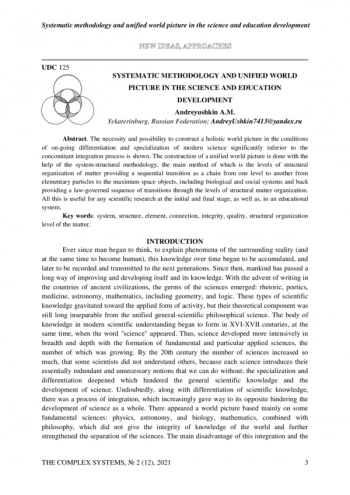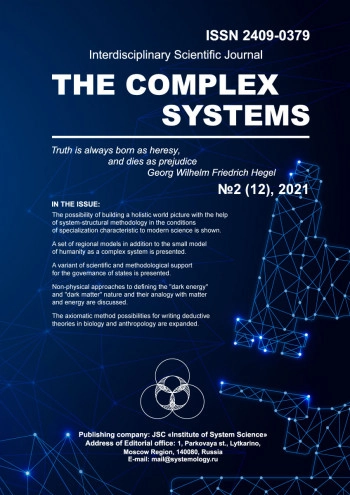Abstract. The necessity and possibility to construct a holistic world picture in the conditions of on-going differentiation and specialization of modern science significantly inferior to the concomitant integration process is shown. The construction of a unified world picture is done with the help of the system-structural methodology, the main method of which is the levels of structural organization of matter providing a sequential transition as a chain from one level to another from elementary particles to the maximum space objects, including biological and social systems and back providing a law-governed sequence of transitions through the levels of structural matter organization. All this is useful for any scientific research at the initial and final stage, as well as, in an educational system.
Сайт https://scinetwork.ru (далее – сайт) работает по принципу агрегатора – собирает и структурирует информацию из публичных источников в сети Интернет, то есть передает полнотекстовую информацию о товарных знаках в том виде, в котором она содержится в открытом доступе.
Сайт и администрация сайта не используют отображаемые на сайте товарные знаки в коммерческих и рекламных целях, не декларируют своего участия в процессе их государственной регистрации, не заявляют о своих исключительных правах на товарные знаки, а также не гарантируют точность, полноту и достоверность информации.
Все права на товарные знаки принадлежат их законным владельцам!
Сайт носит исключительно информационный характер, и предоставляемые им сведения являются открытыми публичными данными.
Администрация сайта не несет ответственность за какие бы то ни было убытки, возникающие в результате доступа и использования сайта.
Спасибо, понятно.




